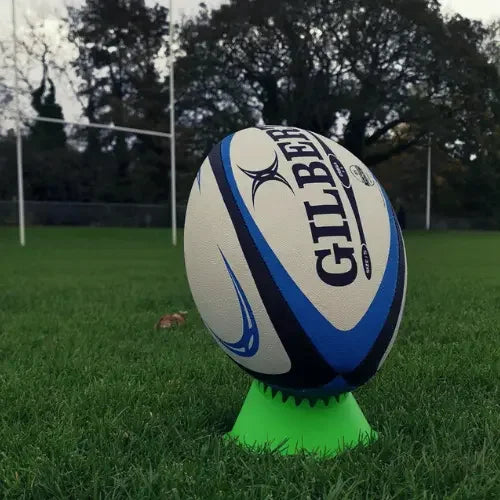Getting back into rugby following injury - a physio's guide
Injuries unfortunately are the scourge of the game, depriving all rugby players of game time and shortening the years played for most.
Often we rush back to training and playing, pressure from coaches, team mates and the desire to play the game we love all add up to many players coming back too soon.
Not many rugby players will ever claim to be at 100%, however we can get pretty close if the correct return to play protocols are followed.
Despite our fair share of injuries and surgical repairs, we are no physio experts at Rugbystuff.com so we turned this question over to a pro, Stephen Wrigley of The Health Rooms in Peebles.
With over 30 years experience he has the credentials, and not just with sport and rugby teams - he is the Clinical Lead Physiotherapist for the Ministry of Defence in Scotland so is just the man to deliver on this question….
Return to play following a lower limb injury
It is a common question to be asked. When can I return to play?
There are certain rehabilitation milestones to achieve on the road to returning to play which if achieved give you the best chance of returning to rugby at the earliest safe point and prevent recurring injury.
Common re-occurring injuries such as hamstring, groin and back injuries can be avoided if the rehabilitation process is complete.
Restoring joint/soft tissue flexibility, strength, functional patterning/proprioception (knowing what position your limb is in space), adherence to rehabilitation and game fitness are all important factors to consider.
In this article we will discuss important aspects of lower limb rehabilitation that assist you to get back to playing as soon as possible.
[prc-collections-carousel]
FLEXIBILITY
includes both joint and soft tissue
Joint injury
There should be no reactive swelling occurring, ideally no swelling should be detectable.
Occasionally after surgery such as Anterior Cruciate Ligament reconstruction some residual swelling can be detected or after inversion injuries at the ankle swelling can persist for several months but importantly it should not increase in size following exercise and there is no palpable heat.
Joint swelling will limit joint mobility if the swelling is large enough. Full joint range of movement is required to return to play.
If you are having joint issues, Rugbystuff.com stock a large range of sports supports to help you get back on the rugby pitch.
Soft tissue injury
Muscle ligament and tendon.
Injured soft tissue tends to become less flexible than non-injured tissue, one of the aims of rehabilitation is to restore length of tissue.
Doing this will allow normal movement to occur and contribute to the prevention of re-injury. If the injury is chronic you often find other muscles may become less flexible as well as the injured muscle.
A typical scenario often seen is a chronic injured hamstring leading to tightness in the calf muscles (Gastrocnemius and Soleus), hip adductor muscles and reduced spinal flexion.
TISSUE LOADING
The ability of your soft tissues to tolerate load is crucial in allowing you to return to play.
If the tissue cannot tolerate the physical load you will suffer re-occurrence of injury.
The ability to generate force (eg strength testing) is a way to assess the ability of the tissue to tolerate load.
Using a formula called the Limb Symmetry Index (LSI) we can test the strength of the muscle and compare it to the non-injured side.

An example is a player recovering from a knee injury. Using a 1 repetition maximum (1RM) effort leg press you can test the force generated in the injured limb compared to the non-injured side.
Results on testing
Non injured side 1RM leg press = 100kg, injured limb 1RM = 80kg.
LSI Calculation LSI (%) = injured limb / uninjured limb x 100
80/100 = 0.8 x 100 = 80
Conclusion
The injured side 1RM leg press is 80% of non-injured 1RM leg press. This would suggest further strengthening of the injured leg is required.
If the injury is long standing in order to make the LSI relevant you must ensure the non-injured side strength measurement is at a level expected.
To do this use the calculation:
Relative Strength Index (RSI). RSI (%) = Load lifted / body weight (Kg) x 100
Research based normal values for single leg RSI
Calculation for the post knee injury patient
If the expected result is be able to press 125% body weight, analysis suggests a 25% loss of expected muscle strength.
Using both the LSI and RSI calculations you can conclude there is a deficit in the injured lower limb strength compared to the non-injured limb, but the non-injured limb is not as strong as expected.
Further strength rehabilitation is required for both limbs.
FUNCTIONAL TESTING


Analysing movement e.g. squat, single leg squat, skills specific to your position or running style can identify abnormal movement patterns.
Abnormal movement patterns can be a result of muscle weakness, soft tissue tightness, faulty muscle recruitment and proprioception deficits (proprioception is sense of knowing the position and motion of your body).
A common fault seen is when the lower limb is loaded and the knee rotates inwards.
This rotation can put structures such as the anterior cruciate ligament under greater load than if the knee was not rotated.
Therefore training to resolve any unnecessary rotational forces during movement will help prevent injury and improve muscle recruitment.
This process should include balance and proprioception exercises.
Functional test such as hop for distance and vertical hop height allows you to compare forces generated in the limb and using the LSI calculation you can compare results to the non-injured side.
If there is a large discrepancy between lower limbs it would suggest you are not ready to perform high intensity running/game skills
Symmetry is the key to success.
If you can demonstrate full flexibility, no reactive swelling, adequate symmetrical strength, proprioception/balance and symmetry on functional testing then you are ready to return to full training, gradually increasing your training load specific to your position and game fitness before returning to play.
The information in this blog is a guide and is not meant for you to use in making the judgement if you are ready to return to play.























